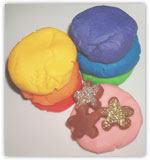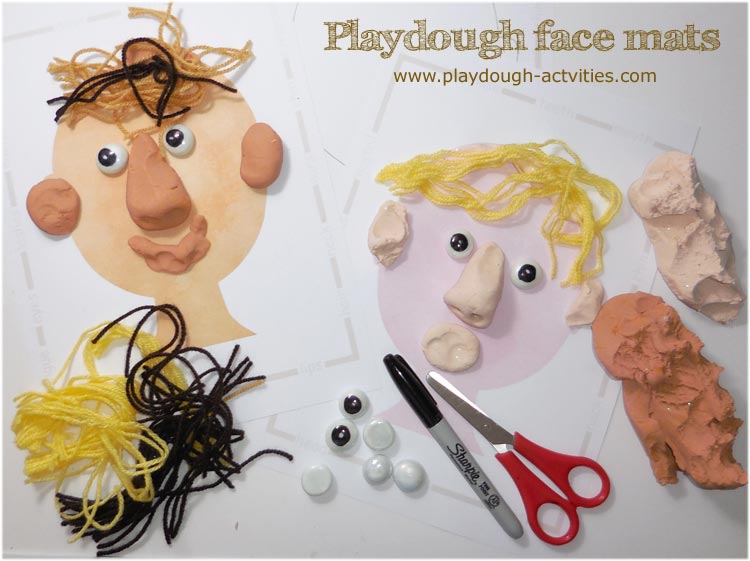 Playdough face mats are
a great way to encourage young children to identify and explore their own
facial features, naming the appendages they see when looking at themselves
in a mirror and noticing the same parts on the faces of their friends, family
members, favourite story book characters and maybe even a stranger!
Playdough face mats are
a great way to encourage young children to identify and explore their own
facial features, naming the appendages they see when looking at themselves
in a mirror and noticing the same parts on the faces of their friends, family
members, favourite story book characters and maybe even a stranger!
Ears, cheeks, chin, and neck are some of the body part names that mean
children can pinpoint where sensations like a tickle or an itch happens
andduring the playdough modelling activities they'll find opportunities totalk
about a range of issues such as noses and where a sneeze comes from,how eyes
blink and cry, and mouths form sounds, curve up for happy smiles, and downwards
to shape a growly grimace. By sharing personal experiences everyone's ideas
and designs can be receated in the dough.

There are 13 face templates available to print via the links on this page
or you can buy the full set of laminated, high-resolution mats on eBay. The six hairstyle outline sheets can be used
to look at different hair lengths, colourings and the professional hairdressers
who help us keep things tidy by cutting it. Position tiaras and crowns,clips,
bows, bands, and bobbles in the playdough and make each piece ofwork as
unique as its creator.
 Make
your own homemade playdough with this simple recipe or buy Play-Doh on amazon.co.uk
Make
your own homemade playdough with this simple recipe or buy Play-Doh on amazon.co.uk
Resources to create playdough faces
 Glass pebbles and permanent markers to make eyes
Glass pebbles and permanent markers to make eyes
 yarn for hair - lip cutters - novelty glasses - scissors, pens and paper - Mr Potato Head accessories
yarn for hair - lip cutters - novelty glasses - scissors, pens and paper - Mr Potato Head accessories
Playdough faces: activity suggestions
- Use mirrors for self portraits
- Look through books and magazines to recreate a favourite character
- Include blank laminated sheets for self-expression
- Pick an era, ethnic dress or facial jewellery to explore
- Use as part of your preschool planning and learning themes of
'all about me', 'ourselves' 'who am I' or 'myself'
- Sing songs to accompany the activity - head and shoulders, My
Body,'Teddy says' - touch your nose'
|
|
|
|
